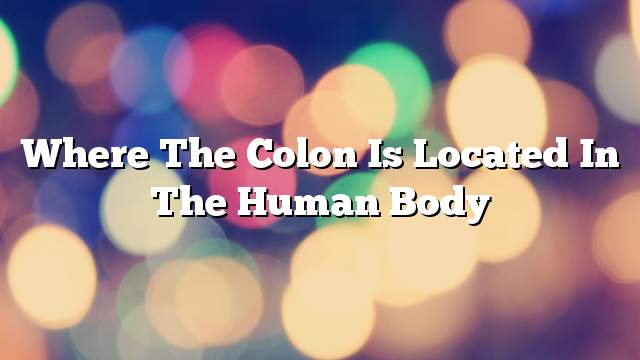Digestive
Human is a living organism that feeds on other organisms from different animals and plants. For this reason, humans possess a complex digestive system capable of digesting the various foods that humans eat. Food passes through several successive stages to be analyzed into simple elements that can be used within cells to produce energy. The food begins to digest from the oral cavity where the teeth, salivary glands and tongue; Saliva moisturizes the food, teeth are cutting food as an initial digestion, and the tongue is pushing food to the pharynx and then to the esophagus and then to the stomach. In the stomach, food is stored in part for passage into the intestine, and there is also hydrochloric acid and enzymes that help to analyze food. The intestine digests the food completely, as it absorbs the nutrients from it and transferred to the blood for distribution to the rest of the body, and the device of disposal disposal of the remains of non-useful.
Large intestine
The large intestine is one of the parts of the digestive system and the human organ, which works mainly to absorb fluid from the materials coming from the small intestine and to remove the remaining solids in the form of faeces. The average length of the small intestine is 1.5 meters, which is one fifth of the length of the digestive system. The large intestine is divided into four sections, respectively:
- Cecil : There is in the iliac region of the right hip, which is the beginning of the large intestine and the end of the small intestine, separated by the valve.
- Colon : The digested material coming from the cecum comes up to the colon, then moves transversely and then downwards.
- Straight : Some anatomy scientists consider the last parts of the large intestine, and works on the storage of waste until the human out of the anus. The average length of the rectum is 12 cm.
- Anal canal : Some anatomical sources exclude this section and suffice with the previous three sections, but some classify the anal canal as responsible for removing the waste from the large intestine.
Location of the colon in the human body
The colon is one of the important internal organs of the body, and the spread of the symptoms of the colon among a large segment of people, especially recently because of the change in the food pattern of the human, and the nature of daily activity among members of human communities. The colon is part of the large intestine, located at the bottom of the abdomen and occupies a large area of the abdominal cavity. It almost wraps around all areas of the abdomen. It extends from the bottom of the rib cage to the pelvic area, horizontally, at the abdominal level. The digestive and ejaculatory systems, where the latter part of the large intestine.
Colon parts
The colon consists of four main parts:
- Colon Transverse : Stretches horizontally in the abdomen under the thorax.
- The ascending colon : Is located in the right part of the abdomen in a longitudinal way from top to bottom.
- Downward colon : Is located in the left region of the abdomen in a longitudinal from top to bottom.
- Colorectal colon : Is an oblique extension in the direction of the descending colon, and is tilted to the left and down on the top of the flexion connected to the rectum of the last extensions of the colon before the anus.
Location of Colon
The colon is a common organ between the digestive system and the digestive system, where food enters the mouth cavity and undergoes mechanical and chemical digestion. It then reaches the stomach where the digestion process is more complex. The food then moves to the small intestine, which is connected to the colon to absorb food, And the rest of it completes its way towards the colon, which absorbs the remaining fibers, water, salts and food residues, and interferes lymphatic system at this stage in order to prevent infections, and then the colon through fermentation cells, especially with the help of bacteria By converting the remaining food that is not absorbed into the stool can be stored in the colon and rectum, to be pushed out of the body through the anus.
The muscles of the digestive system play an important role in moving the food inside, by pressing the parts of the colon, and then push food to pass through, and the process of pressure by the muscles surrounding the colon according to a calculated system, where the disturbance in the pressure of the muscles generated some Known gastrointestinal diseases, such as diarrhea and constipation.
Colon Diseases
There are many chronic diseases and symptoms related to the colon. For example, colon cancer is a cancerous disease that affects the lower part of the colon near the rectum, which is one of the most common causes of death associated with cancer. The American Cancer Society said earlier that in 2015, colon cancer would affect 93,000 people in the United States alone and that one in 20 people would die. This type of cancer is caused by the abnormal growth of the lining of the colon wall resulting from the wrong and unhealthy eating habits of humans.
Colon is a widespread disease, the most common disease in the digestive system, especially in females, the symptoms of the disease are abdominal pain, bulges, irregularity of defecation with diarrhea and constipation continuously or intermittently. Some doctors report the cause of the disease to the stress and stress of the patient, and often patients with irritable bowel syndrome and depression, and may be due to unhealthy diets.
